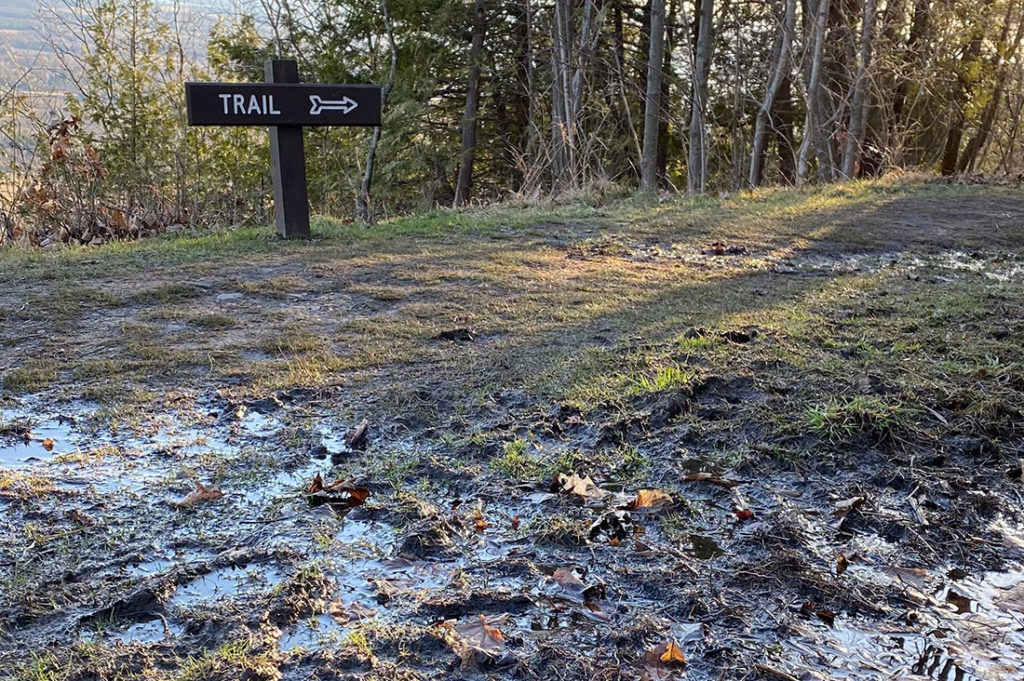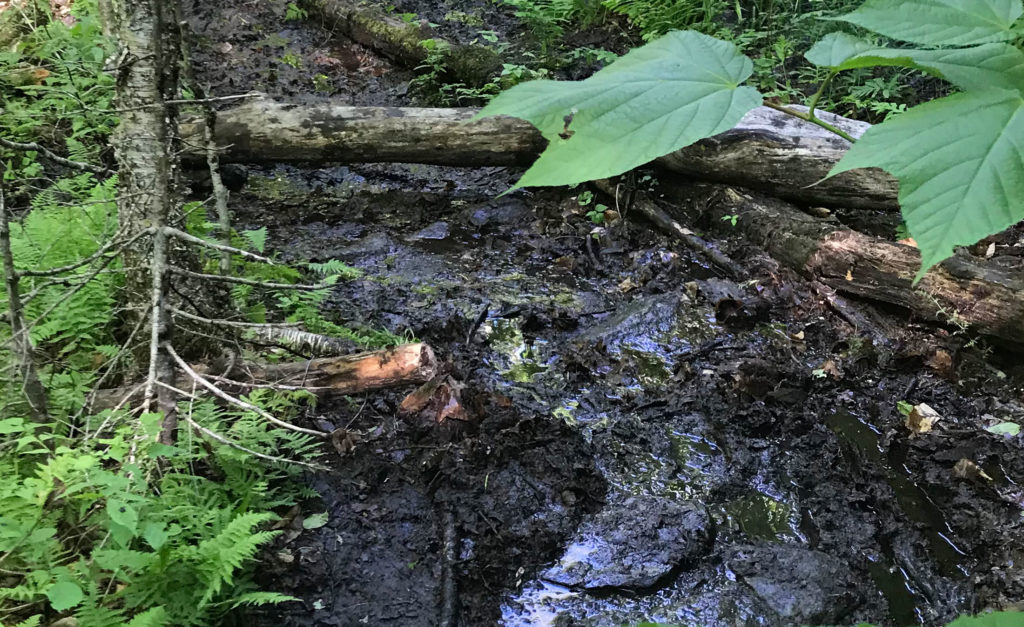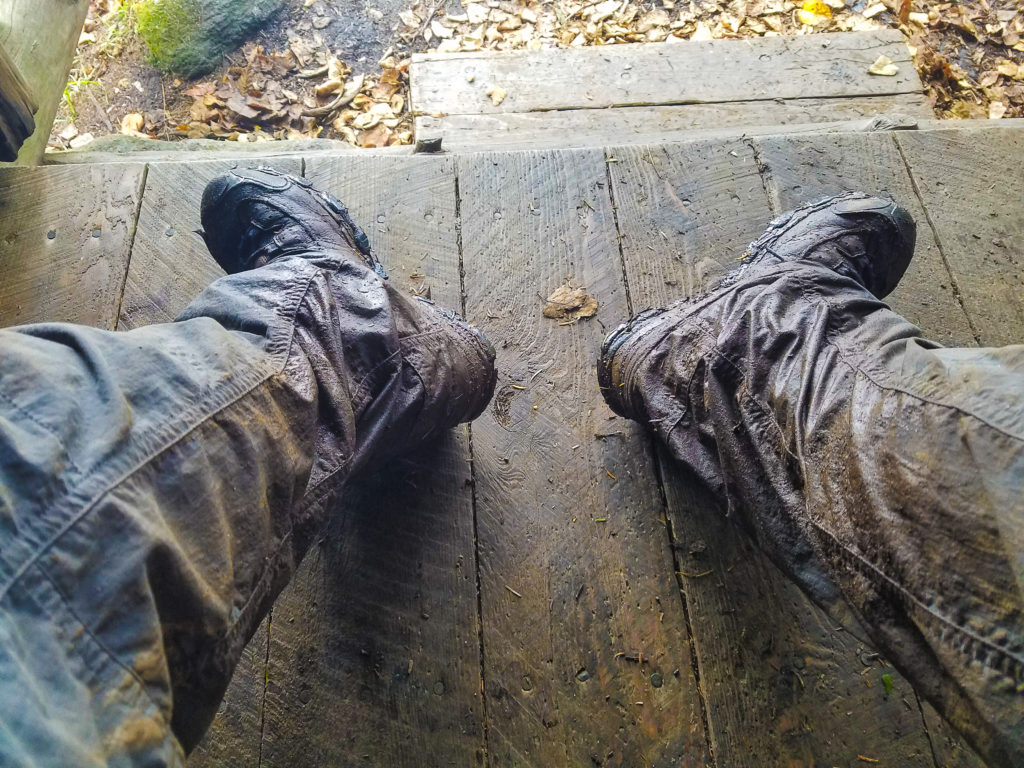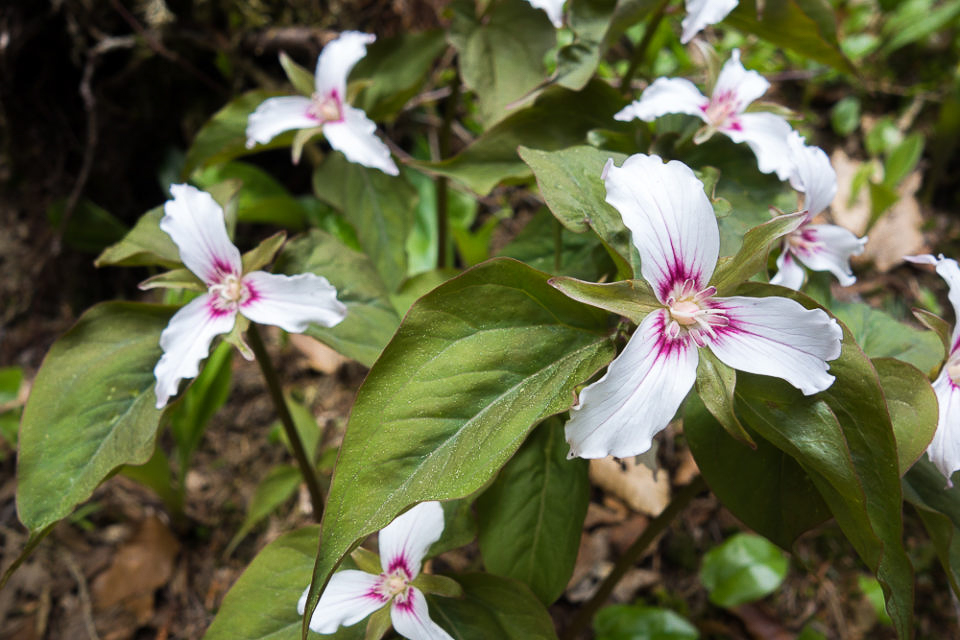
Mud season. It’s a time that many Vermonters are familiar with, that trail maintainers dread, and that disappoints many hikers and bikers as we are instructed to avoid wet and muddy trails. But mud season doesn’t have to be so brutal. What underlies the obvious eyesore and how can you plan for an active, outdoorsy spring? Keep reading.
- More on mud season
- Hiking recommendations
- Vermont FPR trail closures are updated weekly
- TrailFinder Closed Trails Map
What is mud season?
Mud Season is the period between winter and spring where thawing occurs, and is informally referred to as Vermont’s fifth season. Its trademark feature: all the mud. This time period depends on the weather, but historically begins around the snowmelt in late March or early April and finishes in early June.
Why is it so muddy in Vermont? It starts with Vermont’s winters: they’re long and cold. This gives the ground soil ample time not just to freeze, but to freeze 60-70 inches deep (depending on latitude). This is common in many northeastern states, including Maine, New Hampshire, and northern New York.
As temperatures warm, the frozen ground begins to thaw at surface level and releases water in the process. The thawing continues downward as temperatures rise and reach consistently warm conditions.
However, those wavering temps between April and June cause a slow thaw. Because the lower ground levels stay frozen longer, they prevent the water from draining down into the earth. It’s trapped at surface level, creating mud. The snowmelt and rain that accompany warming weather contribute to the water trapped at surface levels.
Does hiking during mud season damage trails?

The short answer is yes. The seasonal freeze and thaw are natural to this region. But as snow melts and spring rains arrive, the ground can only hold so much water. Deep and wide mud puddles appear, sometimes taking up entire sections of trail. Excessive foot traffic on oversaturated trails causes soil compaction. Soil compaction occurs when mechanical stress or vibrations (like that from plodding hiking boots) force soil particles closer together. This creates a higher density of soil and less air pockets. With fewer and smaller air pockets, water can’t drain easily into the soil, and plants have to work harder to push roots through the dense soil.
Long term, this degrades the quality of the trail by reducing its ability to absorb water, which causes increased flooding later. It also makes it harder for vegetation to grow. Erosion from water and wind then carries the soil away, leaving rocks and roots exposed.
Hikers cause increased damage when they attempt to walk around those giant mud puddles that block the trail. Skirting the trails’ edges may keep you dry, but you’ll also trample vegetation, widen the trail, and cause more environmental damage.
So can I hike at all during mud season?
Many state forest trails are closed, and we ask that you avoid using trails with mud, even if they are not officially closed. High elevation peaks like Mount Mansfield (4,395′) and Camel’s Hump (4,081′) will still have ice and snow into early June. You will continue to see muddy areas throughout trails until that completely melts.
But that doesn’t mean you can’t hike! We have dozens of suggestions for lower-elevation trails (below 2,500′; they dry out faster) and durable surfaces like mountain roads, paved bike paths, and accessible trails.
- Staff favorites: Mount Philo in Charlotte, Mount Ascutney in Windsor, and dirt roads statewide.
- Explore mud season around the state by region
- Suggested day hikes, by location and mileage.
- State-owned trails that are open, by location and mileage.
- Vermont State Parks trail recommendations by region
- Mud season HikeVT recommendations: scenic hikes; high-mileage hikes; alternatives to popular peaks; hikes to waterways; accessible hikes.
Other things to consider:

As trails dry out and you venture into the forest, make sure you are prepared for the elements… and to turn around if need be. Here’s what you should know:
- Know when to turn back. Mud is not a durable surface, and continued foot traffic will both create a mess for summer and cause long-term trail damage. If you encounter impassable mud (you shouldn’t sink more than half an inch), turn back toward the trailhead.
- Vermont has about 8,000 miles of dirt roads, including many to trailheads, which can get horribly rutted out during mud season for similar reasons. Just as with hiking, excess car traffic can make driving conditions worse for residents or those who must use dirt roads. Avoid driving on muddy dirt roads if you can during mud season. That may mean finding another alternative hike.
- If you do encounter mud and cannot turn back, walk through the puddle instead of around it. Walking around causes vegetation damage and more mud. Stick to the trail.
- Durable footwear is a must, especially in wetter conditions. Wear waterproof boots, preferably with rubber soles for better footing. Gaiters are a nice add-on, as they help keep water, dirt, mud, and snow out of your boots. At higher elevations where snow and ice linger, you may still need Microspikes or snowshoes.
- Whether you’re hiking, mountain biking, or otherwise, be sure to check trail conditions ahead of time. Visit Forest, Parks, & Recreation for a list of open and closed trails; join the GMC Facebook Group for real-time feedback on conditions; or call our virtual Visitor Center at (802) 244-7037.
Mud season doesn’t have to be boring.

Mud season is also the time when the natural world comes alive. Explore signs of spring or learn more about Vermont’s natural world with some of these articles and videos:


















